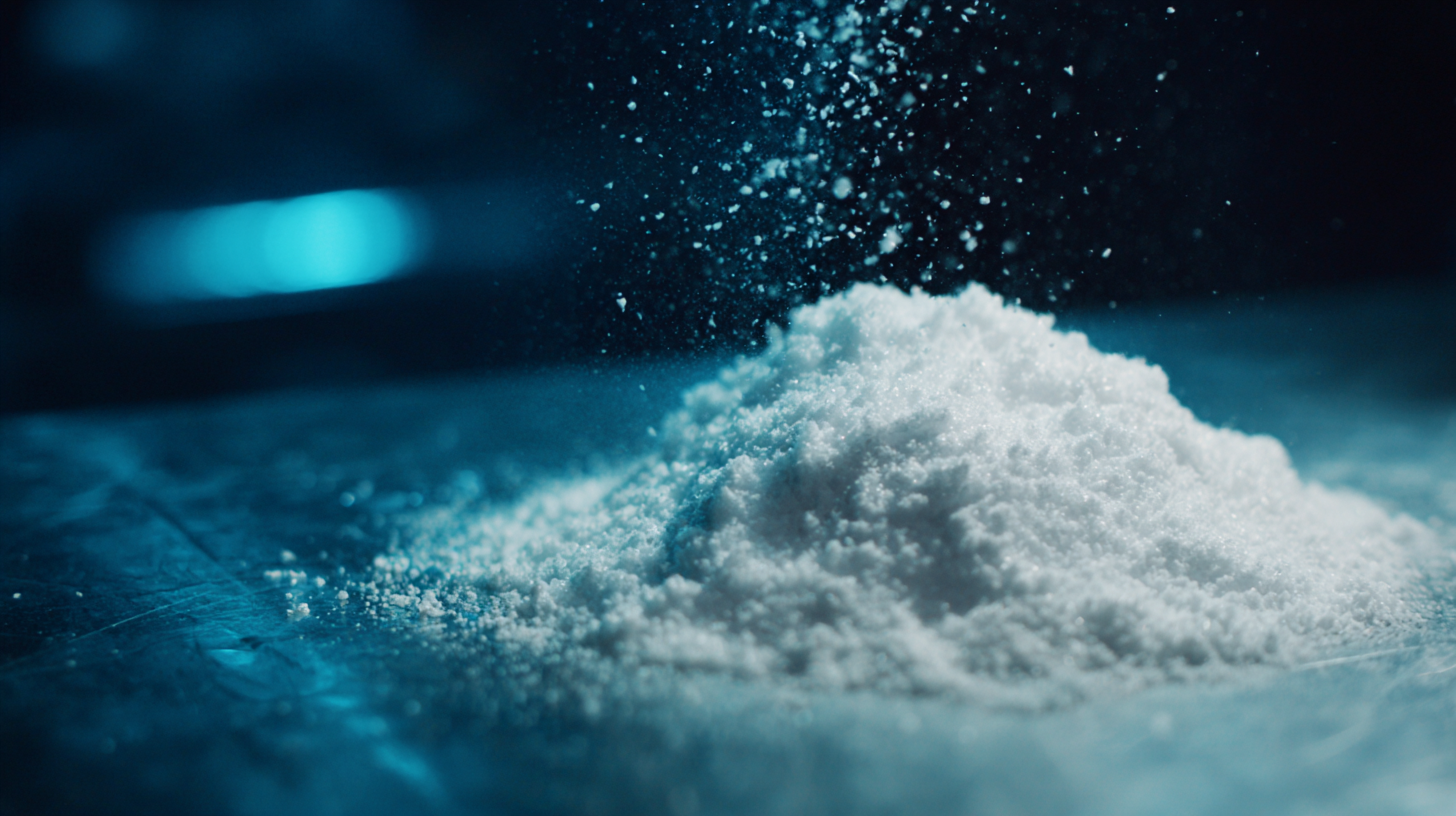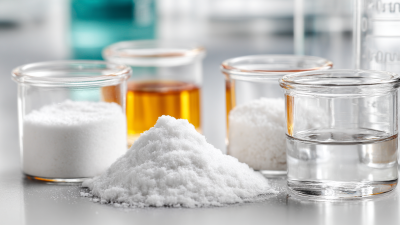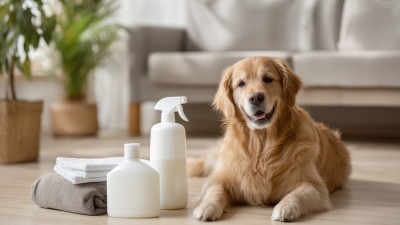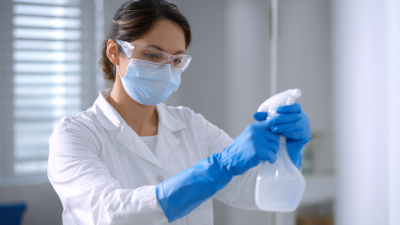Sodium Percarbonate, a crystalline compound known for its eco-friendly bleaching and cleaning properties, is making significant strides in the sustainable cleaning industry. As reported by the Sustainability Consortium, the global green cleaning market is projected to reach $12.2 billion by 2025, fueled by consumer preferences for environmentally safe products.
 Sodium Percarbonate not only decomposes into non-toxic compounds—water, oxygen, and soda ash—when used but also offers a safer alternative to conventional chlorine bleaches, which are linked to various environmental concerns. The European Commission's REACH database emphasizes the importance of transitioning to less harmful substances, making Sodium Percarbonate a prime candidate for reformulating household and industrial cleaning agents.
By integrating this compound, manufacturers can not only meet regulatory standards but also cater to the growing demand for sustainable solutions, thereby revolutionizing the cleaning sector while significantly mitigating its environmental impact.
Sodium Percarbonate not only decomposes into non-toxic compounds—water, oxygen, and soda ash—when used but also offers a safer alternative to conventional chlorine bleaches, which are linked to various environmental concerns. The European Commission's REACH database emphasizes the importance of transitioning to less harmful substances, making Sodium Percarbonate a prime candidate for reformulating household and industrial cleaning agents.
By integrating this compound, manufacturers can not only meet regulatory standards but also cater to the growing demand for sustainable solutions, thereby revolutionizing the cleaning sector while significantly mitigating its environmental impact.
Sodium percarbonate emerges as a green alternative in the realm of cleaning solutions, offering an eco-friendly option that effectively tackles stains without the harmful side effects associated with conventional chemical cleaners. As the awareness of environmental impacts grows, consumers are increasingly seeking alternatives that not only clean but also protect human health and the planet. The shift from harsh chemicals to safe options like sodium percarbonate exemplifies a broader trend toward sustainable cleaning.
Tips for using sodium percarbonate include transforming it into a powerful stain remover by mixing it with water to create a paste that can be applied directly to stubborn marks. Additionally, adding it to your laundry can help brighten whites and remove odors without the need for toxic additives. For everyday cleaning, consider combining sodium percarbonate with vinegar for a natural disinfectant that is both effective and harmless to your home environment.
Embracing these green alternatives not only enhances the cleanliness of living spaces but also encourages a gradual change in consumer behavior towards more sustainable practices in household cleaning. By replacing traditional cleaning products with sodium percarbonate, we can enjoy a cleaner home while minimizing our ecological footprint.
| Aspect | Sodium Percarbonate | Conventional Cleaning Agents |
|---|---|---|
| Composition | Sodium carbonate and hydrogen peroxide | Various chemicals, including bleach and phosphates |
| Biodegradability | Fully biodegradable | May contain persistent chemicals |
| Effectiveness | Effective in stain removal and disinfection | Effective but harsh on surfaces |
| Environmental Impact | Low toxicity to aquatic life | Potential harm to aquatic ecosystems |
| Use Cases | Laundry, surface cleaning, stain removal | Household cleaning, industrial applications |
| Safety | Non-toxic, safe for home use | May require safety precautions |
Sodium percarbonate (SPC) is increasingly recognized for its potential in sustainable cleaning applications, leveraging its eco-friendly properties. One of the most intriguing aspects of SPC is its ability to generate reactive oxygen species, which enhance the breakdown of organic pollutants and improve sludge treatment processes. Research indicates that the activation of SPC, particularly through innovative methods such as using magnetic cobalt-based catalysts, can significantly degrade various contaminants. This not only promotes environmental sustainability but also enables efficient resource recovery from waste.
Tips for effective cleaning with sodium percarbonate include:

The environmental impact of traditional cleaning agents is a growing concern, as many of these products contain harmful chemicals that can pollute water systems and degrade ecosystems. According to a report by the European Commission, nearly 75% of household cleaning products contain substances that can cause adverse effects on aquatic life. These compounds often contribute to the phenomenon known as “chemical runoff,” which can lead to the accumulation of toxins in water bodies, affecting not only aquatic organisms but also the humans who rely on these water sources for drinking and bathing.
In contrast, sodium percarbonate emerges as a powerful and eco-friendly alternative. This compound, which releases hydrogen peroxide when dissolved in water, offers effective cleaning without the negative environmental effects associated with traditional agents. A study published in the Journal of Environmental Management highlighted that sodium percarbonate decomposes into oxygen and soda ash, both of which are less harmful to the environment. Additionally, its use can significantly reduce the carbon footprint associated with cleaning processes; the Carbon Trust reports that shifting to such sustainable options can lower overall emissions by up to 30%. This shift not only promotes cleaner environments but also supports the growing market for green products, which is projected to reach $415 billion by 2027, reflecting an increasing consumer demand for environmentally responsible cleaning solutions.
Sodium percarbonate has emerged as a powerful agent in both household and industrial cleaning applications. Its effectiveness is primarily attributed to its ability to release hydrogen peroxide when dissolved in water, making it an excellent alternative to traditional bleaches. This characteristic allows it to tackle tough stains and odors while being gentler on fabrics and surfaces.
In household cleaning, sodium percarbonate can be used to brighten laundry, remove grime from kitchen surfaces, and even disinfect areas with its oxidative properties. Its biodegradable nature makes it an environmentally friendly choice, aligning with the growing demand for sustainable cleaning solutions.
In industrial settings, sodium percarbonate is increasingly utilized for its efficiency in cleaning processes that require reduced chemical usage while maintaining cleanliness standards. For instance, innovative formulations such as sodium percarbonate-MnO2 effervescent tablets have been developed for membrane cleaning. These tablets enhance membrane flux recovery and durability, critical components for optimizing industrial cleaning cycles. The versatility of sodium percarbonate not only makes it a cost-effective cleaning agent but also supports the movement towards greener practices in various sectors.
As the cleaning industry increasingly prioritizes sustainability, sodium percarbonate has emerged as a game-changer. This eco-friendly compound, often hailed as a natural alternative to conventional bleaches, breaks down into oxygen, water, and soda ash, making it a powerful yet biodegradable cleaner. Future trends indicate a significant shift towards formulations incorporating sodium percarbonate, driven by both consumer demand and regulatory pressures aimed at reducing harmful chemicals in cleaning products.
Tips for incorporating sodium percarbonate into your cleaning routine include mixing it with water to create an effective stain remover for laundry or household surfaces. For a deeper clean, consider combining it with other natural ingredients, such as vinegar or baking soda, to enhance its cleaning power while maintaining eco-friendliness. Another tip is to opt for bulk purchasing, which not only reduces packaging waste but also often comes at a lower cost, aligning with sustainable practices.
Embracing sodium percarbonate in cleaning applications can lead to a healthier home and a reduced environmental footprint. As innovations and formulations evolve, we can expect an increase in products that leverage this versatile compound, promoting a cleaner planet while still delivering exceptional cleaning results.







